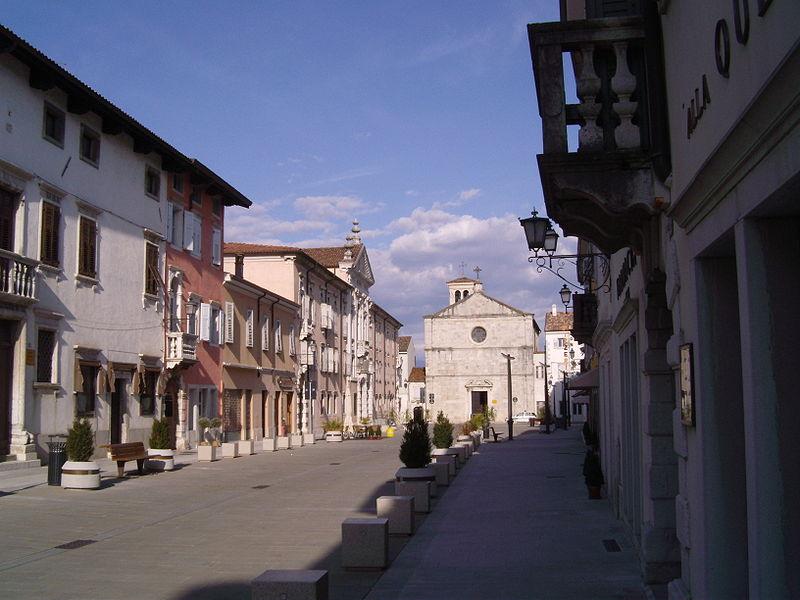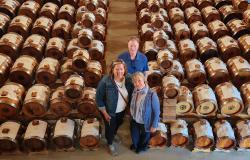Italy’s turbulent history has given it many historic towns of great architectural interest. We discover three small but perfectly formed ones: Gradisca d’Isonzo, Anghiari and Cefalù.
Italy is a country of towns. A fragmented past, which saw the peninsula divided into dozens of tiny independent states, bequeathed it a plethora of small urban settlements—often seats of local notables—which offered the neighbouring countryside a place of aggregation and trade closer than the capital city.
Centuries of intestine warfare also meant that the towns often changed hands from one ruler to another, with virtually each one of them leaving his mark on buildings and squares.
Take Capua for example—the Etruscans founded it, the Romans gave it an amphitheatre (now situated just outside town), the Lombards a cathedral and several churches, the Normans a castle and the Spanish emperor Charles V another. Or Spoleto, which has a Roman theatre and bridge, an early medieval cathedral built to replace the one razed to the ground by Frederick Barbarossa, and a grand fortress, built in the 14th century on orders of Cardinal Egidio Albornoz to secure the Church’s rule over the area. Or Gubbio with its Roman mausoleum, the Palazzo dei Consoli—a powerful symbol of the town’s spell as a free municipality in the Middle Ages—and the Palazzo Ducale, seat of the Dukes of Montefeltro, who ruled from the 15th to the 16th entury.
But while towns like Spoleto, Gubbio and Capua are firmly on the map of places to tour in Italy, there are plenty of smaller historic towns to discover. We have selected three of the best which are definitely worth a visit.
Gradisca d’Isonzo, Friuli

Seven families. That’s all Gradisca was until the early 12th century, when a document recorded this tiny hamlet as part of the lands belonging to the Patriarchate of Aquileia. But then Venice conquered it in the 15th century, and the Republic’s rulers quickly saw that Gradisca could become a stronghold against the advancing Turks.
In a few years, the sleepy village turned into a thriving fortified town sheltered by a forbidding castle. To help make it stronger, the Venetians sent none other than Leonardo da Vinci and put him in charge of giving the town new, more powerful weapons and better walls.
However, Leonardo’s inventions, though ingenious, didn’t prove sufficient—Gradisca fell into the hands of Austrian emperor Maximilian I in 1511. By then, the strategic importance of the one-time hamlet was such that the Venetians fought for two years to try and get it back—failing miserably at the task.
However, Austrian domination proved a godsend for Gradisca. Sold by the emperor to the Eggenberg dynasty, the town acquired prosperity, peace and graceful palazzos. The sober architecture of Venice’s former fortress became prettier and more light-hearted, with large windows and pretty balconies opening on the cream-hued expanse of grand Baroque façades.
The return into Imperial hands in the 19th century wrought another, dramatic change—part of the old Venetian walls were torn down to open up the town. Gradisca got its Spianata, a café-studded esplanade where the local beau monde could stroll, see and be seen.
But the town’s layers of jaw-dropping architecture are only one of its many attractions. The same blend of Austrian and Venetian permeates the local cuisine, which centres on jota (a pork and potato soup), goulasch and strudel, but also stockfish and the rich grappa-soaked Gubana. All of which can be washed down with the strong reds and the delicate Pinots produced in the area.
For more information, visit: www.comune.gradisca-d-isonzo.go.it (in Italian only)
Anghiari, Tuscany

A jumble of medieval houses climbs along the hill to a fortressed top. Cobbled alleys run under covered passageways linking one stone building to the next. And all around them, thick 13th century walls wrap the town in an impregnable embrace. It is Anghiari, once one of the Florentine Republic’s strongest bulwarks.
Anghiari wasn’t always impregnable. First named in an 11th century document, the town, which was founded by monks, was razed to the ground by an invading army from Arezzo and, later, by Florence.
But then the locals set out to rebuild their walls, and did an extremely thorough job of it. Sheltered by nature on one side and fortifications on the other, the town played a crucial role in protecting Florence and establishing its influence over Tuscany.
In 1440, for example, the Duke of Milan set out to conquer vast swathes of Tuscany. However, he met Florentine troops in the valley under Anghiari—and lost. The battle put paid to Milanese ambitions and secured Florence’s power in the region. To celebrate this, Florentine rulers asked Leonardo da Vinci to capture the episode in a fresco. His original work got lost, but we have later interpretations by other great painters, including Peter Paul Rubens.
That said, Anghiari itself is an open-air celebration of the fierce Florentine pride that saved the day against the Duke of Milan. Behind the powerful walls lie fortresses and palazzos, village houses and ancient churches in the austere, elegant lines of Tuscan architecture. Places such as the Monastero di San Martino, which started life as a monastery and became a forbidding fortress, only to be returned to the monks in later years; Palazzo Taglieschi, a set of medieval buildings restored and reinterpreted in Renaissance style; the sober Palazzo del Marzocco, home of the prominent Angelieri family; the Palazzo Pretorio, seat of Florence’s power in the town. There are also old churches with a noble history—Sant’Agostino was founded by Saint Thomas a Becket, Santa Maria delle Grazie has a terracotta by Andrea della Robbia—as well as a soaring tower, a jewel of a theatre and an ancient square where a market has taken place continually since the 14th century.
And between one building and the next stand dozens of antique shops and craft workshops selling precious linens, ceramics, lace and wrought iron furniture.
For more information, visit www.anghiari.it
Cefalù, Sicily

Jagged cliffs and sapphire sea, blazing sun and golden churches—this is Cefalù, a Sicilian town with a long, turbulent history.
Its roots reach deep into prehistory. Up on the rock that dominates the town, megalithic walls, a cistern and a dolmen attest to a thriving civilization occupying the area as early as the fifth century BC.
The ‘modern’ Cefalù is probably of Greek origin, and was already an important centre in 396 BC, when it became an ally to Carthage.
But that strategic pact did little to save the town’s independence, which came to an end soon after it was sealed. Over the course of thirteen hundred years, from 307BC to 1063AD, Cefalù fell into the hands of Siracusans, Romans, Vandals, Goths, Arabs and, finally, Normans. And it is to the Normans that the town owes its greatest gem—the Cathedral.
Legend has it that, having washed up in Cefalù after a bad storm, Norman king Roger II vowed to build a huge church to give thanks for his lucky escape. Although his real reasons were probably more pragmatic, he did indeed order to have an imposing cathedral built in town, commissioning Arab architects and builders to carry out part of the work. The result is a quintessentially Mediterranean church where Byzantine mosaics meet Norman solidity and Islamic influences.
The Cathedral alone would be worth a journey to Cefalù, but there is more. At the foot of its massive towers lies the medieval town, with its narrow streets, slender arches and lancet windows. And alongside the medieval buildings, opulent relics of more recent eras also make an appearance. That other glorious period of Sicilian architecture—the Baroque—bequeathed Cefalù with elegant palazzos and lavish churches, such as the ornate Chiesa del Purgatorio. Their monumental grandeur contrasts beautifully with the town’s medieval atmosphere.
For more information, visit: www.comune.cefalu.pa.it (in Italian only).




